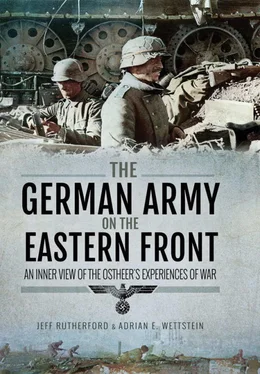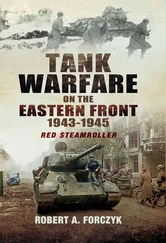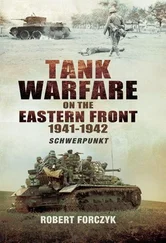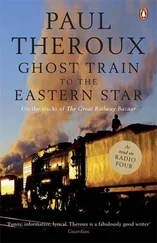
The combat strength of a full rifle company was around 150 men; most companies were therefore reduced to between 10 to 30 per cent of their original combat strength. It is also clear that, even within the infantry, the risk of being killed varied widely. The companies normally not involved in close combat (the 4th, 8th and 12th with heavy machine guns and mortars, the 13th with infantry guns, and the 14th with anti-tank guns) suffered smaller losses than normal riflemen companies.
In the upcoming weeks, Stalingrad became a proper meat-grinder for both sides. In the second half of September alone the Soviets threw some 100,000 men over the Volga into the city. But even with these reinforcements, the defending 62nd Army had fewer men at hand at the end of the month than it had only two weeks prior. [31]The lack of men and material forced German forces to try to conquer Stalingrad piece by piece, with time-consuming breaks taken for regrouping and the building up of available stocks. In October, there were frequent breaks of up to one week between German attacks; clearly the German summer offensive had petered out in the ruins of Stalingrad. For every further attack, additional units needed to be scraped together, but every unit sent to Stalingrad was found only by weakening Sixth Army’s flanks. The practical meaning for the units there is clearly portrayed in a report of the XIth Army Corps, subordinated to Sixth Army and defending the area around the Soviet Don bridgehead by Kremenskaia. [32]
Through the use of all available strength, the troops work to build a continuous main battle line, an artillery protection position and blocking positions. […] Every man in the XIth Corps is aware that the main battle line has to be held to the outmost.
But I feel myself obliged to point out, that the demands in the order could not be completely fulfilled at this time in the area of XIth Corps.
I report in detail:
1) The front area of the Corps on 27.9. amounts to 77km, consisting in part of extremely confusing terrain, that provides the enemy with the ability to easily approach [our lines]. In this section are 3 weak and worn-out divisions with 22 battalions deployed at the front (5 strong, 3 medium-strength, 7 average, 7 weak). The artillery consists of 18 light batteries (64 guns), 9 heavy batteries (30 guns), 4 Nebelwerfer batteries (21 launchers). Additionally, 3 engineer battalions (1 strong, 2 weak), 3 anti-tank battalions (7 companies), 1 reconnaissance battalion, 1 flak battalion with 6 flak-machine guns set for land battle, and 2 weak construction battalions are available. A continuous manning of the practically 80km main battle line to stop the penetration of the enemy is impossible with these forces. […] It should be noted that the combat strength decreases daily. Over 600 men fell out of the 384th Infantry Division in just the time from 18.-22.9.1942.
2) The corps has absolutely no reserves, they are available to divisions only in an inadequate form. Generally, even in minor enemy combat operations, the valuable engineers must be used immediately. […]. The shifting of reserves on the long frontline is hindered; the corps has only one divisional reconnaissance battalion at hand that has the mobility to reach an endangered position in time. Once this unit is in action, infantry reserves must be shifted, and they often arrive too late. The availability of vehicles is hindered by the high demands for supplies and by the lack of fuel. Therefore, the demand for a swift counterthrust can only be rarely fulfilled.
3) The construction of the main battle line, the blocking positions, the artillery protection position and the absolutely necessary quarters have run into major difficulties and can only be completed before the beginning of the winter, if a considerable amount of labour, wood, construction material, and obstacles is delivered shortly. The troops are so weakened by the preceding tasks and through constant combat, and additionally by the continuous sentry duty, insufficient meals, inadequate quarters and hygienic shortcomings, that their work performance falls far below the normal rate.
4) The division’s level of training is extremely low. Due to the continuous fighting and the necessity of building positions, the carrying out of a training program is neither possible at this time, nor in the foreseeable future. An intensive, systematic training phase would be inevitably required, since the troops completely lack suitable junior leaders, the most recently arrived replacements are absolutely insufficiently trained and, in general, the front-line troops are heavily reinforced with less aggressive men drawn from the baggage train, which has been combed out to the limits. These men consist nearly exclusively of panje drivers, who in crisis situations could become a burden for the [frontline] troops.
5) The will to hold out and the recognition of the need to persevere fully exists for all higher and middle leaders. Physical and mental exhaustion, however, cannot be ignored and it causes some concern. It requires the particular influence of the higher leadership, to inspire the appreciation for the demands of the Führererlass . [33]A large section of the younger officers lack any combat experience, or understanding of the officer’s outlook and the handling of men. It is scarcely possible to change this situation in the foreseeable time. The NCO corps is severely decimated. It seems necessary to take accelerated and effective measures for its reconstruction. The men’s mental attitude has suffered from the considerable strain and the temporarily scarce provisions. The thin manning [of the frontline] that is visible even to him and the feeling that he is insufficiently trained impairs his will to fight. Worries about the Heimat threatened by bombing trouble him. Only a long period of quiet and training could restore the necessary fighting power.
I am aware that the worries of the XIth Corps must step back behind the decisive operations of the army in Stalingrad. On the other hand, I regard it as my duty to describe the corps’ actual situation and to propose means for relief before it is too late.
Even under these circumstances, Sixth Army tried desperately to fulfil Hitler’s will to completely conquer Stalingrad. But what did the fighting inside the city look like? This can be seen in an after-action report of one of the final attacks launched by German forces in Stalingrad. On 11 November 1942, Engineer Battalion 179 tried to take Hall 4 of the steel works ‘Red October’, one of the last Soviet strongholds on the western bank of the Volga river. [34]
The 79th Infantry Division carried out an attack against the northwest section of the open hearth furnace hall (Hall 4) as a preparation for the final defeat of Red October. Engineer Battalion 179, reinforced by the 3./Panzer Engineer Battalion 40, was deployed in the following echelon: on the right 3./Panzer Engineer Battalion 40, in the centre 1./Engineers 179 (in the hall itself), on the left 2./Engineer Battalion 179, with the 3. (motorized)/Engineer Battalion 179, in reserve in the centre. The combined strength was 120 men, which attacked as assault groups in four wedges with the support of heavy weapons against Hall 4. The objective was the seizure of the broad part of Hall 4.
The companies reached their jumping-off area between 1 and 2a.m. at the railway line eastward of Hall 4. At 2.50a.m. the formation of the spearheads was completed. At 3.55a.m., our heavy weapons first opened up on the hall, beginning on the centre of the north-western section of Hall 4. Despite the range being known, the original intention to direct this opening fire on the front side of the hall had to be given up, due to the danger of shots falling short because of the guns’ cold barrels.
Читать дальше







![John Stieber - Against the Odds - Survival on the Russian Front 1944-1945 [2nd Edition]](/books/405234/john-stieber-against-the-odds-survival-on-the-russian-front-1944-1945-2nd-edition-thumb.webp)





